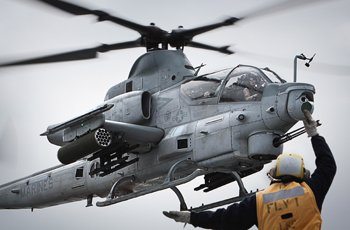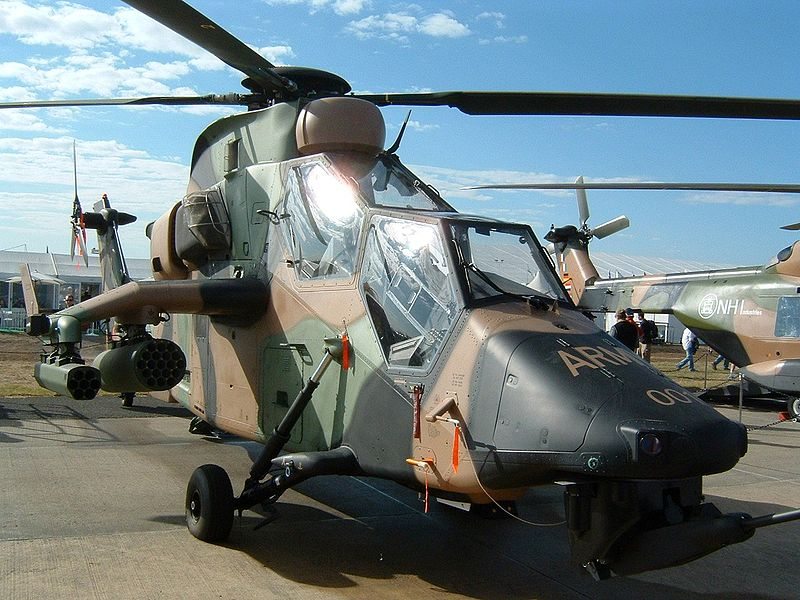Six months into its first operational deployment, the four-blade AH-1Z Viper is performing at levels that show, according to officials, just why the Marine Corps has upgraded its aviation attacking power.
Four of the “Zulu” model SuperCobra attack helicopters have done “extremely well and gone beyond the Marines’ expectations,” said maintenance controller Gunnery Sgt. Jerami Withrow, who hails from White Bear Lake, Minn.
The skid-landing helicopters are flown and maintained by members of an 84-Marine detachment from Marine Light Attack Helicopter Squadron 367 in Camp Pendleton, Calif. The detachment is one of eight that reinforces Marine Medium Helicopter Squadron 268 to comprise the 11th Marine Expeditionary Unit’s aviation combat power.
The light-attack detachment also flies and maintains three skid-landing UH-1Y Venom utility helicopters. This new “Yankee” model Huey also has four blades. In fact, the UH-1Y and AH-1Z share an 85-percent parts commonality, which streamlines training and maintenance.
Since deploying the Yankee-Zulu package in November 2011 to the Western Pacific, Horn of Africa and Middle East regions aboard amphibious ships, and six months ahead of deploying, squadron pilots have flown more than 800 hours and completed more than 500 assorted unit missions, all requiring minimal maintenance, according to skid detachment officer in charge Maj. Michael Swift.
The Yankee-Zulu package is replacing the two-bladed AH-1W and UH-1N helicopters. The new helicopters can carry an additional 2,000 to 4,000 pounds, travel faster and conduct combat operations from a safer distance, according to Gunnery Sgt. Greg Shaw, the staff noncommissioned officer in charge of the detachment’s quality assurance.
“The aircraft readiness has been far beyond what we expected for shipboard operations,” said Shaw, a 32-year-old Clarksville, Tenn., native.
With a fully integrated cockpit and more fuel, blades and overall power, the helicopters can remain airborne longer without having to refuel or deprive ground forces of valuable ordnance, said Shaw.
According to Swift, since June 2011, the Zulus have fired more than 9,000 20-mm rounds and more than 365 inert and high-explosive rockets.
The unit embarked USS Makin Island, USS New Orleans and USS Pearl Harbor in San Diego Nov. 14, beginning a seven-month deployment to the Western Pacific, Horn of Africa and Middle East regions.











